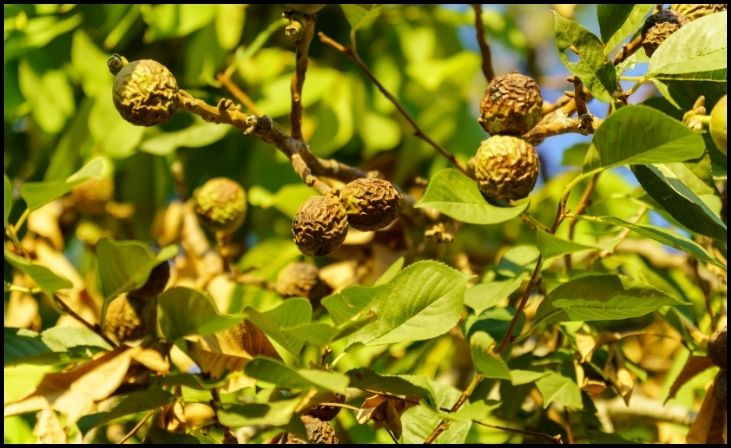Tomatoes, cherished for their versatility and flavor, grace countless home gardens. Yet, their success isn’t guaranteed. Enter the world of companion planting, where strategic alliances between plants can mean the difference between flourishing crops and disappointment. In this realm, the wrong companions can spell disaster for tomatoes, stunting their growth and attracting pests. This article delves into the intricate dance of planting tomatoes alongside their best friends and worst enemies. By understanding the delicate balance of companion planting, gardeners can unlock the secrets to thriving tomato harvests and ensure their garden is a vibrant oasis of flavor and abundance.
1. Marigolds (Tagetes spp.)

Marigolds have long been celebrated in gardens for their ability to repel pests, making them a popular companion plant. However, it’s important to note that marigolds also produce allelopathic chemicals, which can inhibit the growth of nearby plants, including tomatoes. These chemicals are released through the plant’s roots and can affect the germination, growth, and development of neighboring crops. Therefore, while marigolds may offer some pest control benefits, their allelopathic properties make them incompatible companions for tomatoes. To ensure the optimal growth of your tomato plants, it’s best to avoid planting them alongside marigolds.
2. Potatoes (Solanum tuberosum)

Potatoes and tomatoes belong to the same botanical family, Solanaceae, and are susceptible to many of the same diseases and pests. Planting them together increases the risk of fungal infections, such as early blight and late blight, as well as pests like potato beetles and tomato hornworms. Additionally, both crops have similar soil and nutrient requirements, leading to competition for resources. To avoid compromising the health and yield of your tomato plants, it’s advisable to refrain from planting them near potatoes.
For More- DISCOVER THE 9 OF THE WORLD’S FUNNIEST BIRDS
3. Corn (Zea mays)

Corn is a heavy feeder, requiring ample space, sunlight, and nutrients to thrive. When planted too closely to tomatoes, corn can compete with them for resources, such as water, nutrients, and sunlight. This competition can result in reduced growth and yield for both crops. Additionally, the tall stature of corn plants can shade out tomatoes, further inhibiting their growth and development. To optimize the productivity of your tomato plants, it’s best to avoid planting them near corn and instead provide them with adequate spacing and resources.
4. Fennel (Foeniculum vulgare)

Fennel is known for its aromatic foliage and licorice-like flavor, but it also produces compounds that can inhibit the growth of neighboring plants, including tomatoes. These compounds, such as anethole and fenchone, can stunt the growth of tomato plants and interfere with their development. Additionally, fennel’s aggressive root system can compete with tomatoes for water and nutrients in the soil. To avoid detrimental effects on your tomato crop, it’s advisable to keep fennel plants at a distance and avoid planting them in close proximity to tomatoes.
5. Cabbage (Brassica oleracea)

Cabbage and tomatoes have different soil and nutrient requirements, making them incompatible companions in the garden. Cabbage is a heavy feeder, requiring ample amounts of nitrogen and potassium for optimal growth, while tomatoes have different nutritional needs. When planted together, cabbage and tomatoes may compete for nutrients in the soil, leading to potential deficiencies in both crops. Additionally, cabbage plants can shade out tomatoes, reducing their access to sunlight and inhibiting their growth. To prevent nutrient competition and optimize the growth of your tomato plants, it’s best to avoid planting them near cabbage.
6. Dill (Anethum graveolens)

Dill is a popular herb known for its aromatic foliage and culinary uses. While it attracts beneficial insects like ladybugs, which can help control pests in the garden, it can also attract tomato hornworms, a common pest that feeds on tomato plants. Planting dill near tomatoes may inadvertently attract these destructive pests, leading to damage to your tomato crop. To minimize the risk of pest infestations and protect the health of your tomato plants, it’s best to avoid planting dill in close proximity to tomatoes.
Also Read- 7 BEST BIRD FEEDERS FOR HUMMINGBIRDS
7. Walnuts (Juglans spp.)

Walnut trees produce juglone, a chemical compound that is toxic to many plants, including tomatoes. Juglone is released through the roots, leaves, and fruit hulls of walnut trees and can persist in the soil for several years after the tree has been removed. When exposed to juglone, tomato plants may exhibit symptoms of toxicity, such as yellowing leaves, stunted growth, and reduced fruit production. To prevent detrimental effects on your tomato crop, it’s important to avoid planting tomatoes near walnut trees and ensure they are grown in separate areas of the garden.
Conclusion
In the intricate tapestry of garden companionship, the conclusion echoes a vital refrain: choose wisely, and your tomato plants will reward you with a bounty of juicy fruits. By heeding the lessons of companion planting, gardeners can cultivate flourishing gardens where tomatoes thrive alongside compatible companions. As the season winds down and the last tomatoes are harvested, it becomes clear that the journey was worth every effort. Through careful planning, thoughtful consideration, and a dash of horticultural wisdom, the garden becomes a sanctuary of abundance. So, as you bid farewell to another growing season, remember the lessons learned and carry them forward into the next, ensuring that your tomatoes—and your garden—continue to flourish year after year.
FAQs
Yes, rotating tomato crops annually can help prevent the buildup of soil-borne diseases and minimize compatibility issues with neighboring plants.
Signs of incompatibility include stunted growth, yellowing leaves, pest infestations, and reduced fruit production in tomato plants.

Leave a Reply